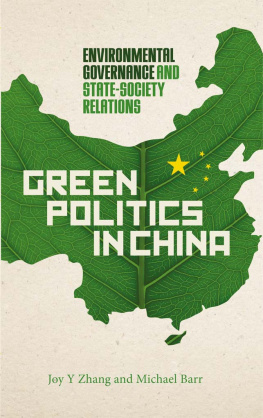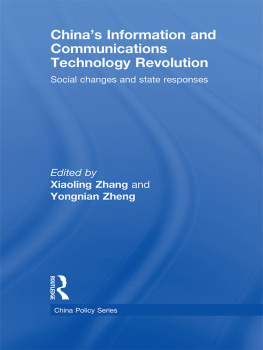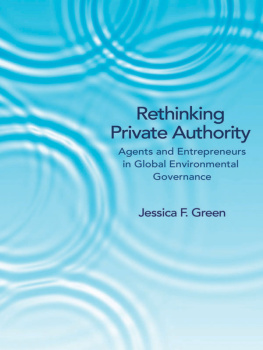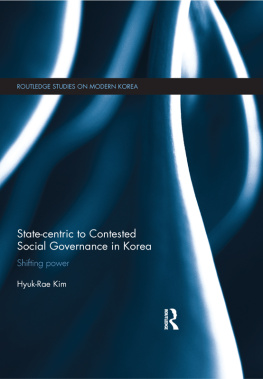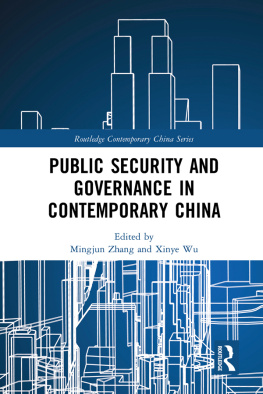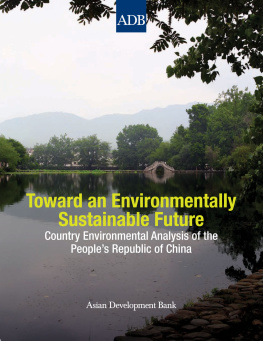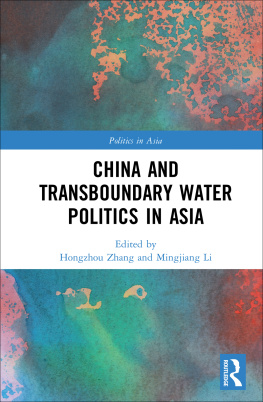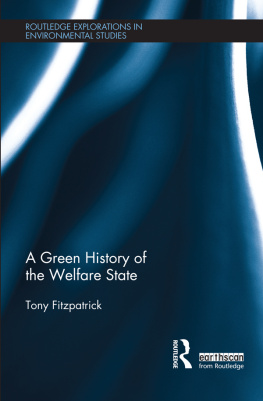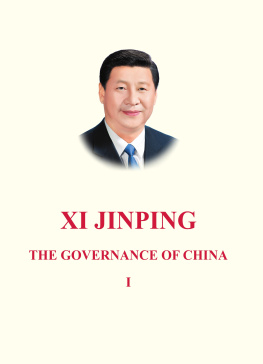GREEN POLITICS IN CHINA

First published 2013 by Pluto Press
345 Archway Road, London N6 5AA
www.plutobooks.com
Distributed in the United States of America exclusively by
Palgrave Macmillan, a division of St. Martin's Press LLC,
175 Fifth Avenue, New York, NY 10010
Copyright Joy Y. Zhang and Michael Barr 2013
The right of Joy Y. Zhang and Michael Barr to be identified as the authors of this work has been asserted by them in accordance with the Copyright, Designs and Patents Act 1988.
British Library Cataloguing in Publication Data
A catalogue record for this book is available from the British Library
ISBN 978 0 7453 3300 7 Hardback
ISBN 978 0 7453 3299 4 Paperback
ISBN 978 1 8496 4912 4 PDF eBook
ISBN 978 1 8496 4914 8 Kindle eBook
ISBN 978 1 8496 4913 1 EPUB eBook
Library of Congress Cataloging in Publication Data applied for
This book is printed on paper suitable for recycling and made from fully managed and sustained forest sources. Logging, pulping and manufacturing processes are expected to conform to the environmental standards of the country of origin.
10 9 8 7 6 5 4 3 2 1
Typeset by Curran Publishing Services, Norwich
Simultaneously printed digitally by CPI Antony Rowe, Chippenham, UK and
Edwards Bros in the United States of America
ABBREVIATIONS
AFSC | American Friends Service Committee |
CAI-Asia | Clean Air Initiative for Asian Cities |
CDM | Clean Development Mechanism |
COP17 | 17th Conference of the Parties on Climate Change |
ENGO | environmental non-governmental organisation |
EPB | environmental protection bureau |
FYP | Five-Year Plan |
GDP | gross domestic product |
GHG | greenhouse gas |
GONGO | government-organised NGOs |
INGO | international NGO |
IPE | Institute of Public and Environmental Affairs |
MEP | Ministry of Environmental Protection, |
NDRC | National Development and Reform Commission |
NEC | National Energy Commission |
NGO | non-governmental organisation |
NNR | national natural reserve |
NPC | National Peoples Congress |
PE | The Pacific Environment |
PM | particulate matter |
UNFCCC | United Nations Framework Convention on Climate Change |
WHO | World Health Organization |
ACKNOWLEDGEMENTS
The research for this book was funded by la Fondation Maison des Sciences de lHomme (FMSH). It forms part of the Cosmopolitan Risk Communities research programme, based at le Collge dEtudes Mondiales, Paris. We are deeply grateful to Professor Michel Wieviorka for his support. Our warm thanks also go to Dr Angela Procoli for her Parisian hospitality and to David Castle at Pluto Press, for his patience and encouragement.
We also wish to thank our interviewees, without whom this book would not have been possible. We are especially indebted to FYF, WXZ and SN for their help in making some of the interviews possible. And last but not least, we also thank AC and TDE for making the endless travel a bit easier.
Joy Y. Zhang
Michael Barr
INTRODUCTION
Hollywood got it all wrong, said Chen Qi, a hydraulic engineer from Shenzhen. He was referring to the movie 2012, in which humans face extinction because of a series of natural disasters. In Chens view, the films biggest mistake was to build Noahs Ark on the Tibetan plateau. The movie assumed Tibet as the last safe place on Earth, but in the face of climate change, the roof of the world will actually be among the first to be affected! Chen had a stack of empirical data to back up his argument. These data were collected not through his formal job as engineer but as a volunteer for Green River, a Sichuan-based environmental non-governmental organisation (ENGO). The data set consisted of records from local metrology offices and independent water sampling tests from 2003 in the Tuotuo river area on the Tibetan Plateau. It is a region of vital importance for environmental security since the plateau serves as the source of the Yangtze River, whose waters help enable China to account for 35 per cent of the worlds rice production.
In fact, Chen and his fellow Green River volunteers also brought these data to the 17th Conference of the Parties on Climate Change (COP17) held in Durban. An observer organisation for the United Nations Framework Convention on Climate Change (UNFCCC) since 2009, Green River is known for its voluminous data collection and analysis. During COP17, Green River shared new findings on the impact of climate change, especially the degrading water quality at the source of the Yangtze (Green River, 2012). But Chen and his friends did not present their work in technical statistics or intricate graphs. They framed the data within the narrative of the silent sheep meaning the sheep that were unable to speak for their physical pain caused by polluted water and malnourishment. Green Rivers study found that while there had been little variation in annual precipitation rates in this area, the form of precipitation had notably shifted from snow to rain, with an increased occurrence of torrential rain. Chens hypothesis was that the change in weather patterns might have washed a higher amount of Tibets mineral-rich surface soil into the nearby rivers. The high mineral content of the water may have caused the sheep to be ill as the local farmers, affected by severe stomach ailments, had long opted for an alternative water source for their own consumption.
When we interviewed Chen in early 2012, he was hoping further research would verify his tentative explanation. As a hydraulic engineer, he was meticulous in giving valid and reliable scientific conclusions. However, he was also keen to not lose time in publicising his initial hypothesis and data on degrading water quality in the source region of the Yangtze River. It is not simply about a gradual change of water quality at a sparsely populated area, explained Chen, but it is pollution of the source of a river that runs through China, serving as the key water supply to approximately one third of Chinas population! For Chen, there were two types of environment challenges:
Most people are familiar with the rhetoric of catastrophic what if scenarios in well-known cities: Shanghai immersed in water or Beijing buried in sand storms etc. The incalculable economic loss alone would be a reason for action. But I feel sometimes we are blinded from environmental challenges that are not in the spotlight but may have more profound and much wider implications for Chinese society.
Chen and his ENGO friends were concerned about obvious headline concerns, but they were more worried about those less visible and perhaps more significant environmental impacts that plague Chinese people on a daily basis such as the potential harms which have quietly slipped into Chinas soil from changing patterns of precipitation.

